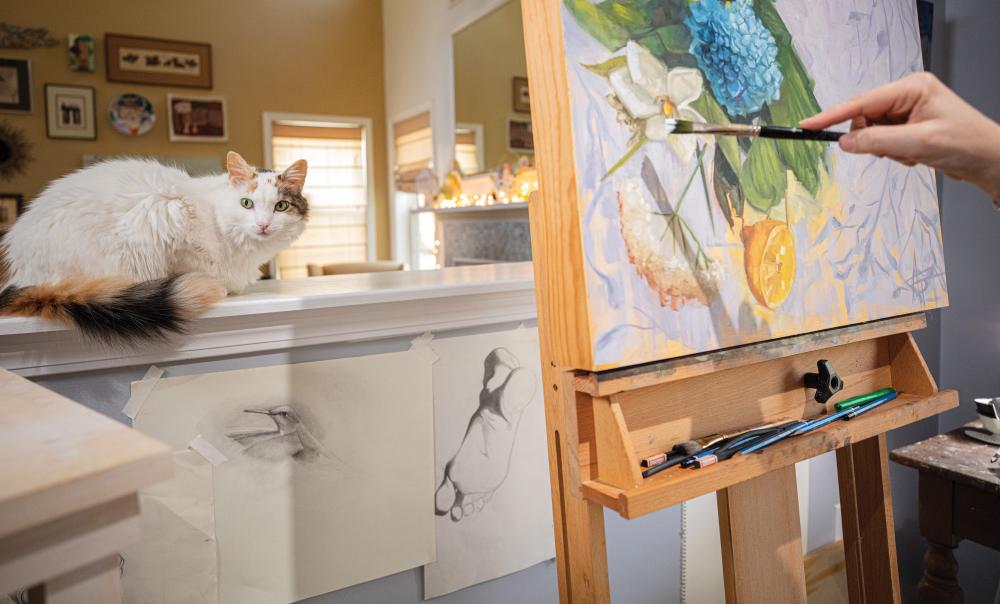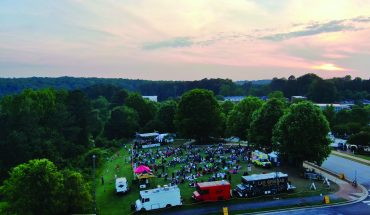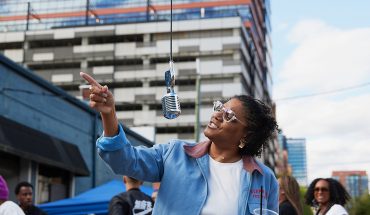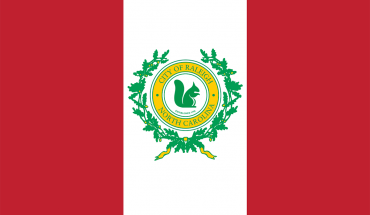In her realistic oil paintings, Andie Freeman finds deeper meaning in everyday objects
by Catherine Currin | photography by Smith Hardy
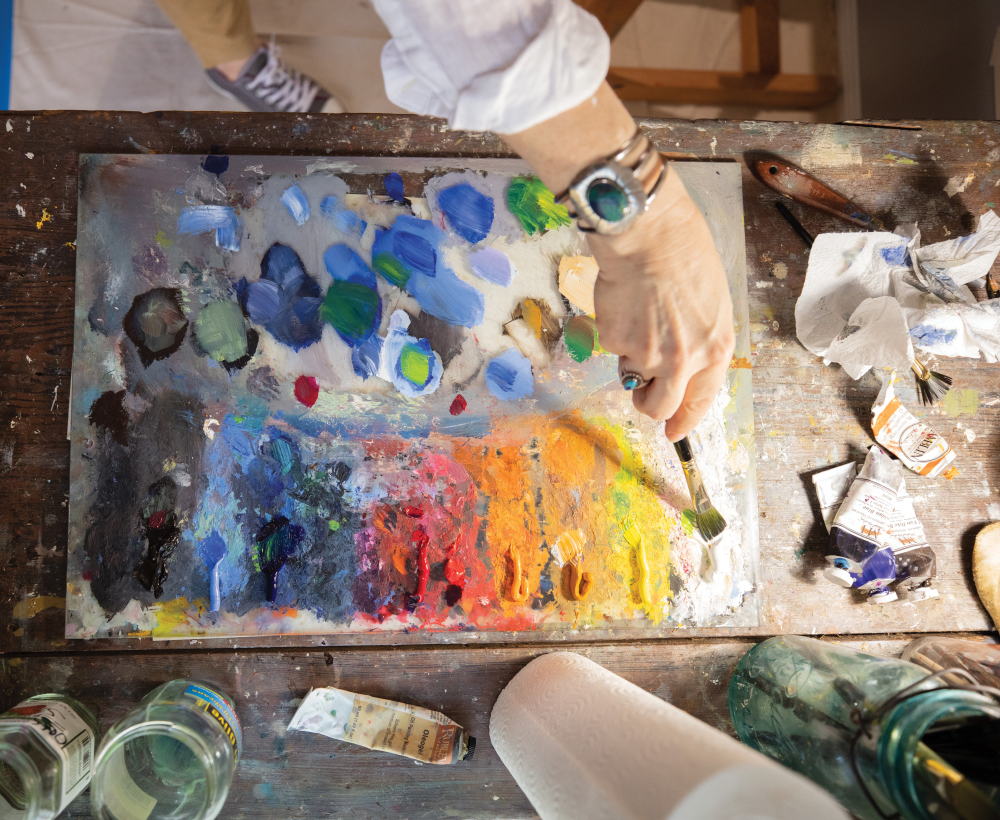
Growing up just west of Boston, Andie Freeman spent lots of time outside. “I loved hanging out by myself in the yard and with nature,” she says. “I made a lot. of goofy things out of weeds and twigs. A lot of that has found its way into my work now.”
Freeman moved to Hilton Head Island, South Carolina, as she was starting high school. She found the Lowcountry’s Spanish moss and Palmetto trees to be a welcome change. “The nature there is phenomenal,” says Freeman. “I went from being a kid who liked to hang in trees and make forts to being a teenager who would take long walks and hang out in the Gullah cemetery.”
Her love of the area kept her close by: she headed to College of Charleston thinking she’d study graphic design, but ended up majoring in studio art. “I went through a couple of majors and finally landed on studio art. The life drawing classes really spoke to me,” she says. After graduation, she and her now-husband McGeath, a writer, moved to Atlanta, where she beefed up her graphic design resume at the Portfolio Center. They floated to different advertising agencies and moved around the South, finally landing in Raleigh in 2010.
A few years after moving to Raleigh, Freeman got a studio at Artspace — and committed to creating full-time. “The studio gave me the space physically, but also time with people – not just other artists but those wandering in and out,” she says. “Both of these things helped me focus where I was going with my art.”
Freeman wants those engaging with her work to see beauty in the stillness. Self-defined as a contemporary realist, Freeman brings everday objects to life through her oil paintings. The ephemera of nature and everyday life — the wild and the mundane — fascinate her, she says, just as they did when she was a little girl exploring her backyard.
Freeman has an ongoing series showing birds, where she juxtaposes realism and abstraction, with whimsical shapes or experimental application techniques contrasting with photo-realistic oils. Other still-life paintings, often made on birchwood panels, depict commonplace items like silverware, fruit, shells, or tools. “I want to take an object and bring it to a level of an artifact,” she says. “I want to help bring people into their imaginations to remember a time or a person who utilized that object.”
This nostalgia has led Freeman back to South Carolina for her newest endeavor, as artist-in-residence at the Coastal Discovery Museum on Hilton Head Island. The museum is sponsoring her solo exhibition at the Island Rec Center, which focuses on the Gullah people of the Lowcountry. Freeman grew up around the Gullah, who are descended from enslaved people who worked on plantations throughout the Carolinas and Georgia. Through this project, she dove deeper into learning about their culture. Her watercolor series, Gullah Traditions, debuts this month, and features historical scenes as well as interviews with Gullah leaders. The largest piece in the exhibition is an oil painting that depicts objects used in Gullah culture, including traditional sweetgrass baskets for rice harvesting and cotton blossoms that evoke the plantations where the Gullah’s ancestors worked.
“The Coastal Discovery Museum’s mission is to inspire people to care for the Lowcountry,” says Natalie Hefter, the museum’s vice president of programs. “Andie’s paintings capture the unique parts of our natural history and cultural heritage that makes this place so special.”

For decades, the Gullah’s land has been in jeopardy, not only due to commercialization, but also by the changing climate affecting sea levels. “It’s a fascinating culture that should be protected in a lot of ways,” says Freeman. “Part of the reason I do the work I do is to preserve this connection to our history.”
This exhibition has origins in a fellowship she received from the Clark Hulings Fund for Visual Artists in 2019. Freeman was tasked with finding a pivotal project; something meaningful that would help take her career in a new direction. “For my project, I wanted to build on this idea of objects telling stories for people,” says Freeman. She recalls how seeing artistic interpretations of the Boston Tea Party, in which some of her forebears had participated, made her better understand the event: “I really felt connected to this history of my ancestors, especially after living in New England.” When she noticed that many everyday objects that the Gullah use today, like fishing nets and sweetgrass baskets, have centuries-old roots, she wanted to celebrate them as part of history. “Objects are how we pass our stories down from generation to generation, and this storytelling is the nut of what all of my work is about,” says Freeman. “We all want to find someone in our past that we can be proud of.”

